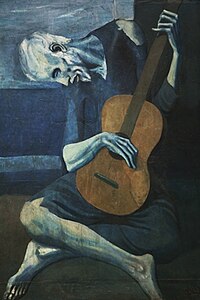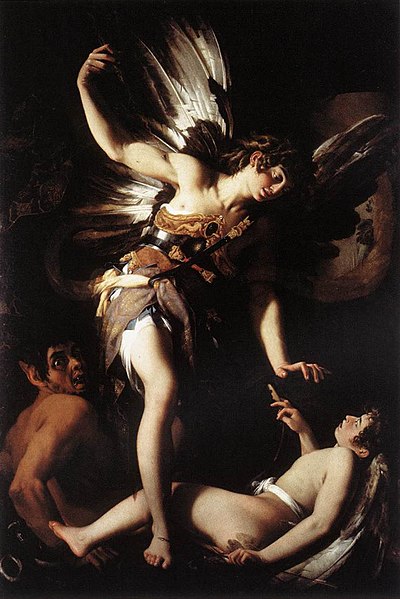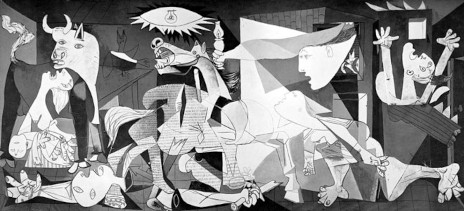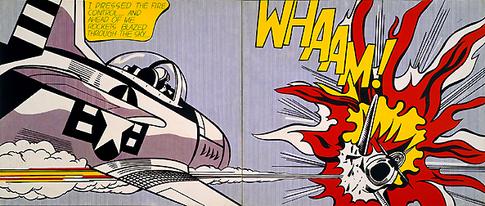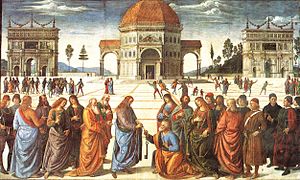Pentimento- A visible alteration in a painting where the artist has changed the piece and there is still evidence of the original in the piece.
The Old Guitarist
1903
Pablo Picasso
Chiaroscuro- A style of art which uses stark contrast in painting, used to suggest volume and modeling of subjects.
Sacred and Profane Love
1602
Giovanni Baglione
Contour line- a line that defines a form or edge, essentially an outline
Complimentary color scheme- A color scheme that is based off of two colors that are opposite of each other on the color wheel.
Analogous color scheme- A color scheme that is based off of two colors that are next to eachother on the color wheel.
Untitled
Chris Carter
Monochromatic- Art that is in one color, or shades of the same color.
Guernica
1937
Pablo Picasso
Tikhvinskaya
ca. 1300
The Holy Trinity
Vladislav Andrejev
Foreshortening- A visual effect where an object appears to be far shorter than it actually is.
Dead Christ
1501
Andrea Mantenga
Crosshatching- Lines that are placed at an angle to eachother.
Veil of Veronica
1513
Albrecht Durer
Modernism- A set of cultural tendencies revolting against realism and tradition, in favor of abstract, unconventional art.
The Gate
1959-60
Hans Hofmann
Post modernism- Movement in reaction to modernism, usually characterized by references to classical art, also the use of words, collage, simplification are used.
Whaam!
1963
Roy Lichtenstein
Picture Plane- The front of the surface or image in reference to the illusion of depth
Christ Handing the Keys to St. Peter
1481-82
Pietro Perugino
Foreground- A part of the view which is nearest to the observer.
Middleground- Area of a piece that is between the fore and background.
Background- A part of the view which is farthest to the observer.
The Adoration of the Magi
1481
Da Vinci
